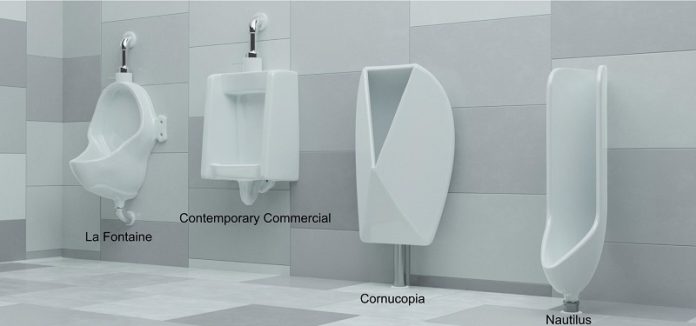
Public restrooms may soon become much cleaner, thanks to a new urinal design that prevents messy splashback.
For over a hundred years, urinal shapes have barely changed.
The classic design made famous by artist Marcel Duchamp in 1917 still looks the same today.
Unfortunately, these traditional urinals often cause urine to splash onto the user and the floor, making public bathrooms less hygienic and more difficult to clean.
Now, a team of researchers led by Zhao Pan and Kaveeshan Thurairajah has created a smarter, cleaner solution.
They studied the way urine hits the urinal surface and found that splashing is much worse when the stream strikes the surface at steep angles.
However, if the urine hits the surface at an angle of 30 degrees or less, the splash is greatly reduced. This discovery led them to design new urinals that naturally guide the stream to hit at shallow angles.
The team created two new urinal models, called the Cornucopia and the Nautilus, using detailed math equations to shape the surfaces just right.
These designs make sure that, no matter where the stream lands, it does so gently, preventing splashback. The researchers tested their designs in the lab and confirmed that they work much better than standard urinals.
The Nautilus design offers even more benefits. It’s built to work for people of different heights, including children and wheelchair users, making it more accessible and user-friendly. The shape ensures a clean, splash-free experience for everyone.
The impact of this innovation could be huge. The researchers estimate that if all 56 million public urinals in the United States were replaced with the Nautilus model, it could prevent one million liters of urine from splashing onto floors every single day.
That would lead to cleaner restrooms, lower cleaning costs, and a better experience for anyone using public facilities.
The team’s findings were published in the journal PNAS Nexus, and they hope this work will lead to real-world improvements in bathroom design.
By using science and smart engineering, this simple but important change could make a big difference in public hygiene and comfort.



